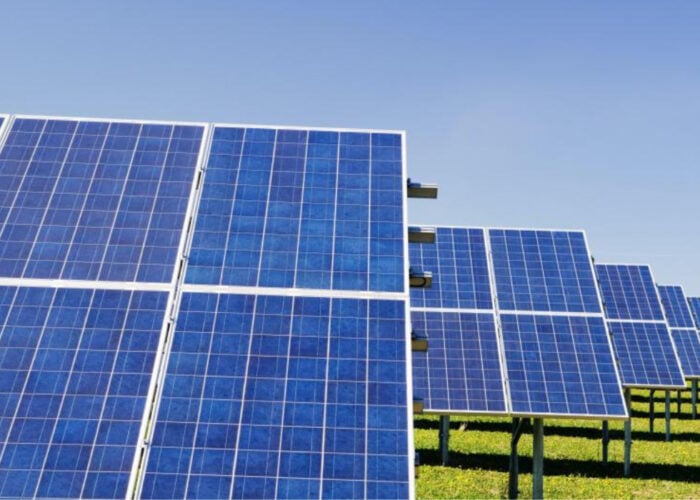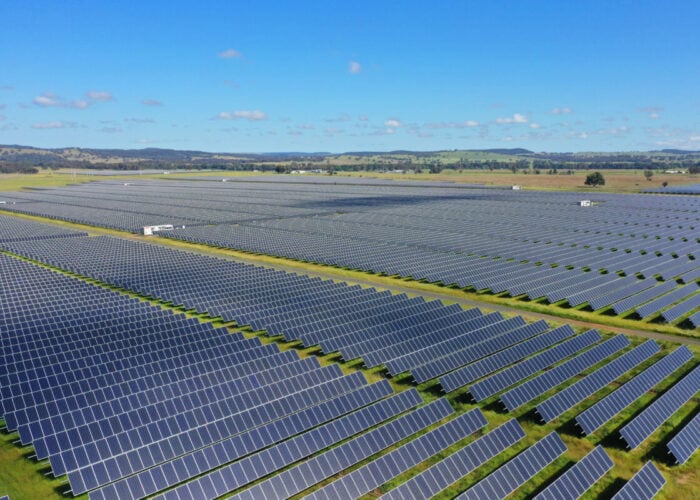
Floating solar has firmly established itself as an answer to the problem of land scarcity for ground-mount PV systems, but remains constrained by a range of technical and regulatory uncertainties.
That is the key message in a newly published report by the International Energy Agency’s Photovoltaic Power Systems Programme (IEA PVPS), which examines some of the obstacles holding back floating PV (FPV) adoption.
Unlock unlimited access for 12 whole months of distinctive global analysis
Photovoltaics International is now included.
- Regular insight and analysis of the industry’s biggest developments
- In-depth interviews with the industry’s leading figures
- Unlimited digital access to the PV Tech Power journal catalogue
- Unlimited digital access to the Photovoltaics International journal catalogue
- Access to more than 1,000 technical papers
- Discounts on Solar Media’s portfolio of events, in-person and virtual
Or continue reading this article for free
FPV deployment has continued to expand in areas where land constraints make ground-based utility-scale systems unviable, with China and parts of Europe leading the way in installed floating PV capacity.
However, according to the report, FPV still faces a number of challenges, including regulatory barriers, cost competitiveness compared to land-based systems and uncertainties about environmental impacts and system reliability.
Although various parties such as the World Bank and SolarPower Europe have produced some technical guidelines for floating PV, the report said these lack quantitative guidance for yield modelling and reliability.
To help begin to address these shortcomings, the report set out a number data-driven insights, models and parameters it said would help improve the accuracy of energy yield, reliability and maintenance predictions over FPV systems’ lifetimes.
Yield modelling
One area where current technical standards for FPV fall behind those underpinning land-based PV is the accuracy of energy yield assessments. According to the report, current EYA models for floating PV lack reliable data for parameters such as module temperature, wave-induced losses and soiling losses.
Furthermore, standard modelling tools do not adequately cover FPV-specific needs, while existing meteorological databases can exclude sea and coastal areas, which limits FPV yield estimation, the report said.
Given the relative immaturity of FPV yield estimation tools, the report highlighted the need for improved empirical studies and data-sharing to refine modelling approaches and align them with the particular characteristics of floating solar systems.
Reliability
The report also highlighted persistent knowledge gaps in the area of FPV reliability. In particular, it said the stress profiles experienced by components in floating solar installations were poorly understood and not properly quantified, while information on degradation and field failures was scarce. As a consequence of these two factors, no accelerated stress testing protocol is in place to evaluate component reliability.
The report provided an overview of environmental stressors in the operating environment of FPV systems and outlined three different sources for quantifying degradation effects: long-term field data for accurate identification of failure modes, laboratory-based accelerated stress tests to identify issues before they manifest, and simulation models to identify correlations between degradation rates and environmental stressors.
Operations & maintenance
A further area where floating PV lags behind ground-mount is operations and maintenance. For example, there are currently no standards detailing the recommended sensors and procedures for monitoring of FPV plants. Added to this are the specific challenges of operating and maintaining floating PV plants, which require specialised experts such as divers and marine engineers.
The report presents a failure mode and effects analysis of the specific operational challenges of FPV plants and how these impact O&M. This includes a list of the key considerations when budgeting for floating PV O&M.
Concluding, the report said FPV offered a “promising” solution for expanding renewable energy without increasing land-use pressures. “However, the absence of regulatory frameworks and limited long-term data creates uncertainty for developers, regulators, and investors, slowing FPV adoption,” it added. “Rapid innovation in the field often prioritises confidentiality, even though the industry would benefit from open data sharing.”
Key priorities for future research included understanding FPV-specific stressors, improving predictive models, automating O&M and assessing environmental impacts, it said.
“Addressing these gaps can lead to a more mature, sustainable FPV industry, ready for broader deployment,” it concluded.
‘Floating photovoltaic power plants: a review of energy yield, reliability, and maintenance’ is available in full here.







